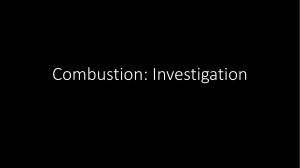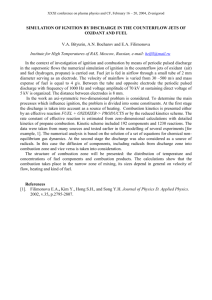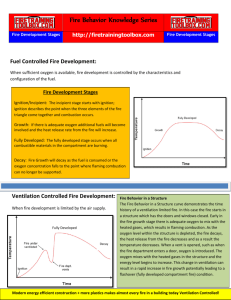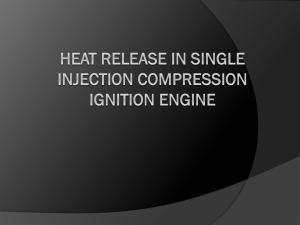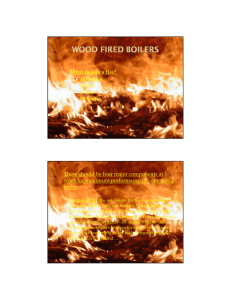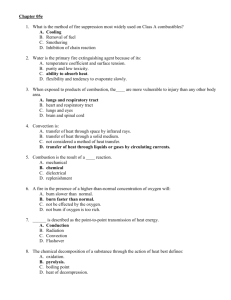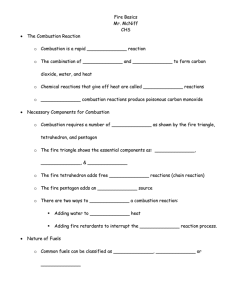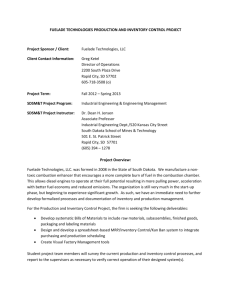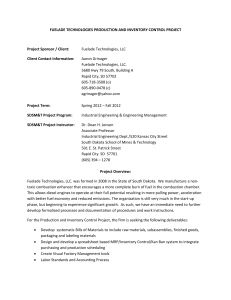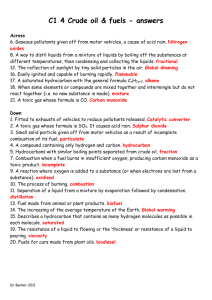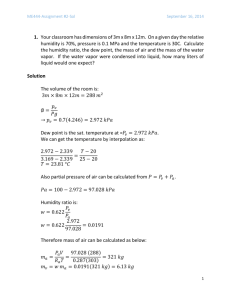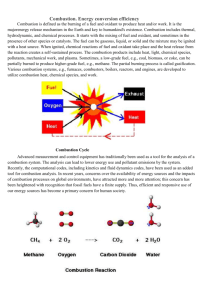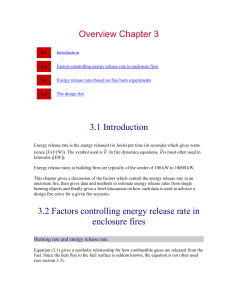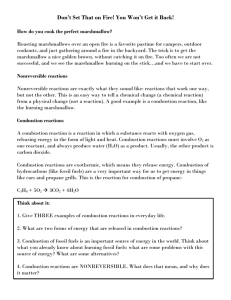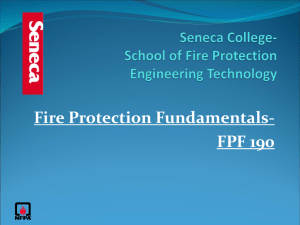basic terms related to the fundamentals of combustion
advertisement
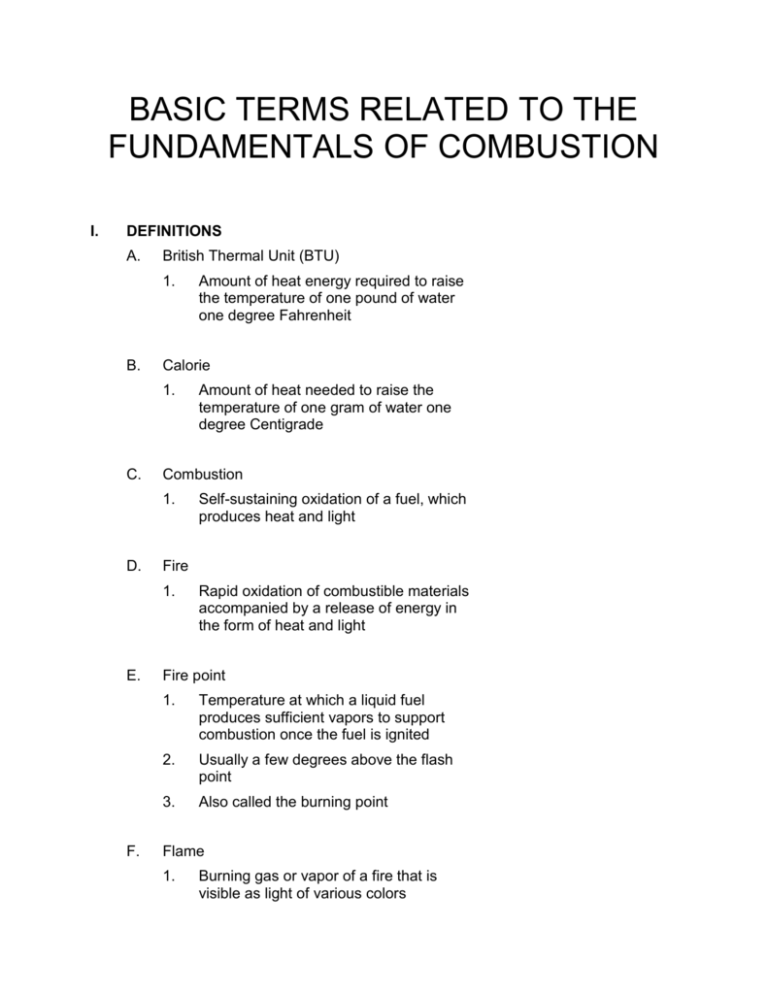
BASIC TERMS RELATED TO THE FUNDAMENTALS OF COMBUSTION I. DEFINITIONS A. British Thermal Unit (BTU) 1. B. Calorie 1. C. F. Self-sustaining oxidation of a fuel, which produces heat and light Fire 1. E. Amount of heat needed to raise the temperature of one gram of water one degree Centigrade Combustion 1. D. Amount of heat energy required to raise the temperature of one pound of water one degree Fahrenheit Rapid oxidation of combustible materials accompanied by a release of energy in the form of heat and light Fire point 1. Temperature at which a liquid fuel produces sufficient vapors to support combustion once the fuel is ignited 2. Usually a few degrees above the flash point 3. Also called the burning point Flame 1. Burning gas or vapor of a fire that is visible as light of various colors G. H. Flammable limit 1. Percentage of a substance in the air that will burn once it is ignited 2. Most substances have an upper (too rich to burn) and lower (too lean) flammable limit 3. Also known as J. L. b) Flammable range Minimum temperature at which a liquid gives off enough vapors to form an ignitable mixture with air near the vapors surface Heat 1. Form of energy that is proportional to molecular movement 2. To signify its intensity, it is measured in degrees of temperature Ignition temperature 1. K. Explosive limit Flash point 1. I. a) Minimum temperature to which a fuel in air must be heated in order to start selfsustained combustion independent of the heat source Lower explosive limit (LEL) 1. Lowest percentage of fuel/oxygen mixture required to support combustion 2. Any mixture with a lower percentage would be considered "too lean" Oxidation 1. Chemical reaction in which oxygen combines with other substances 2. M. Fire, explosions, and rusting are examples of oxidation Oxidizer 1. Substance that yields oxygen readily and may stimulate the combustion of organic and inorganic matter N. Permissible exposure limits (PEL) O. Pyrolysis 1. P. Smoke 1. Q. Chemical decomposition caused by heat that generally results in the lowered ignition temperature of the materials Visible products of combustion, which vary in color and density depending on the types of material burning and the amount of oxygen present Upper explosive limit (UEL) 1. Maximum concentration of vapor or gas in air that will allow combustion to occur 2. Concentrations above this are called "too rich" to burn

